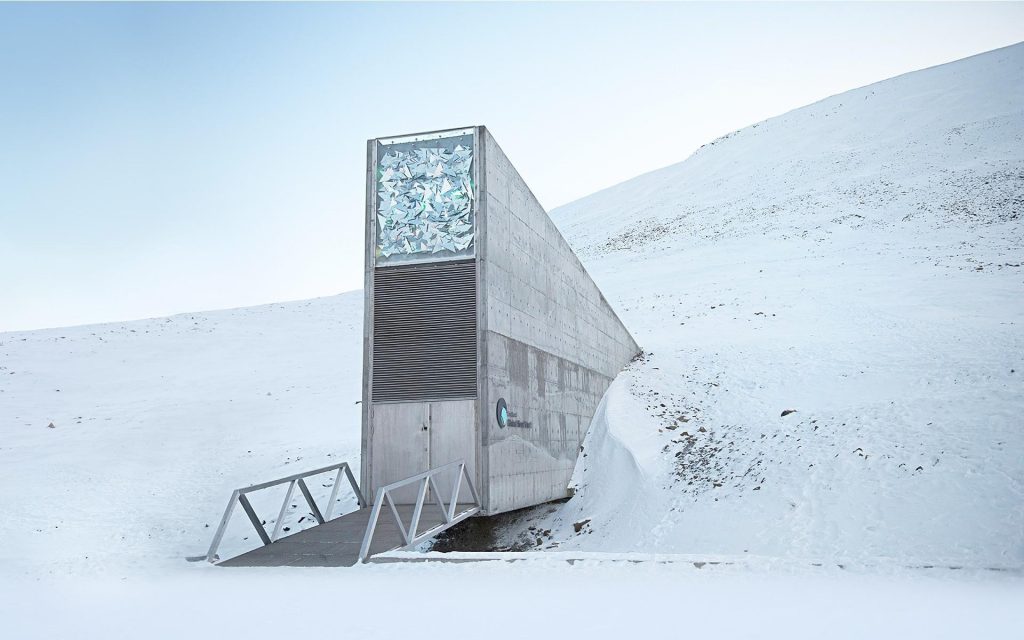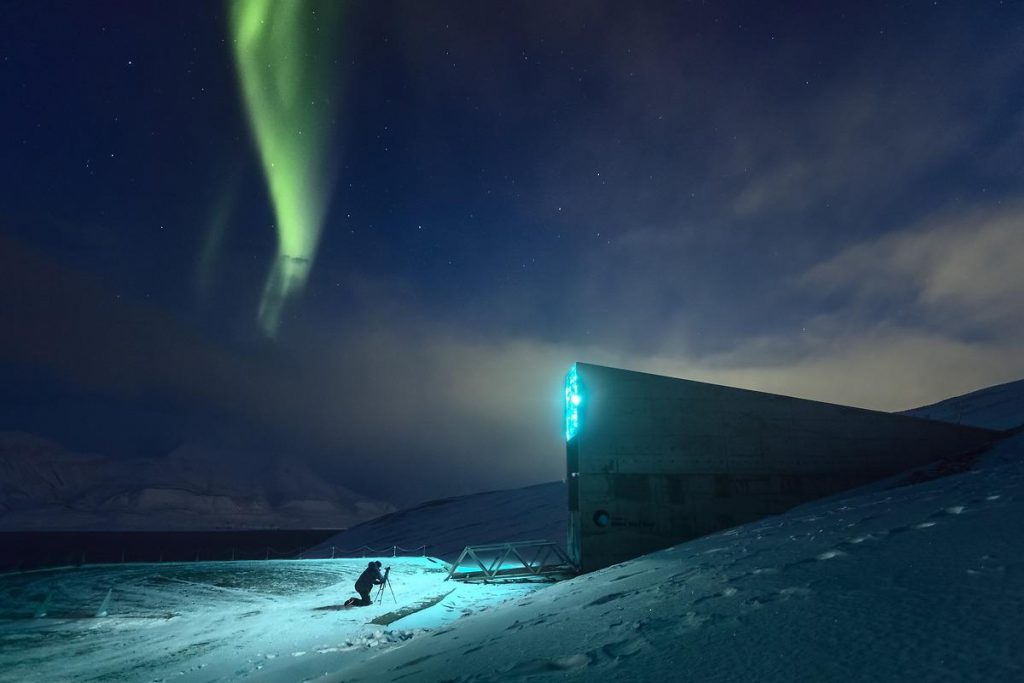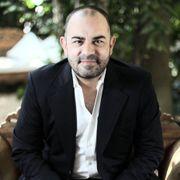In 2008, Norway gifted the world the Svalbard Seed Vault, also known as the “Doomsday Vault.” This self-sustaining facility, carved into a mountainside and surrounded by permafrost, protects heirloom seeds from future apocalyptic conditions. The idea is if we ever need to restart society these precious plant species will not be lost and our food diversity is protected.
The vault has been hailed by the Project Management Institute (PMI) as one of the 50 most influential projects in the world, along with the World Wide Web, the Euro, Netflix, the Intel processor, the Harry Potter books, and other marvels of human ingenuity and effort. Here is the complete PMI list: 50 most influential projects of the last 50 years. Svalbard has long been one of my Top 10 favorite nonprofit projects.
You get to Svalbard via the Longyearbyen airport, which is the planet’s northernmost with scheduled commercial flights. A remote mystique swirls about the place. The streets have no names and those venturing beyond the settlement keep a rifle nearby due to marauding polar bears, putting one’s mind to the world of a Philip Pullman novel, what with golden compasses and armored bears. The now iconic entrance to the vault — which is not far from the airport — is a top selfie spot. Practitioners of geocaching consider the caches around Svalbard top on their list. Beware of bears, natch.

During the night, the light installation “Perpetual Repercussion” by Norwegian artist Dyveke Sanne emits an ethereal glow, enveloping the vault with an other worldly feel.

Photo by Maria Sahai.
How Can A Seed Vault Save Us From Starvation?
Nothing lasts forever and hopefully we will be gone before the planet undergoes a crisis that eliminates agriculture, but you have to think ahead. Food fact: although innumerable seeds and crops dot the planet, 50% of the global diet consists of just three: rice, corn, wheat. A lack of diversity in our calorie-enriched foods means we are at risk of going hungry if hit with catastrophic weather, for example. There are small seed banks all over the world, but Svalbard Seed Vault is the backup plan. A citadel for crops.
It has also been called a Noah’s Ark and compared to an airplane’s “black box” because it serves as a backup gene bank for seeds. Seeds don’t last forever, so they are periodically tested and replaced as needed. The intake, care, and testing of seeds is managed jointly by the Norwegian government (which paid for construction of the vault), the Crop Trust, and the Nordic Genetic Resource Center (NordGen).
Flood At The Seed Vault
The site of the vault was picked because it was deemed the safest place on Earth to store seeds. 600 miles from the mainland with low temperatures, buried in layers of ice. The location isn’t without fault, however. Longyearbyen, the remote home of the seed vault, has been plagued with climate change-related woes. It faces avalanches, floods, and is warming faster than any other spot on the planet due to global warming.
Higher than normal temperatures melted some of the permafrost in 2017 causing the vault’s entryway to flood (See Carl Kruse Svalbard blog post on the incident). Fortunately, water did not enter the vault itself and the seeds themselves were undamaged. But what was meant to be a fortress of isolation and self-sustainability had to be watched 24 hours a day to ensure no more water got in. Trenches were dug and new waterproof walls were put in place, highlighting the dangers of climate change and the vulnerability to areas once remote and frigid.
Bouncing Back. Svalbard Reaches Over 1 Million Seeds
The importance of having a backup vault for the World’s most precious seeds cannot be overstated, and Norway’s Ministry of Agriculture and Food spent almost 20 million dollars to upgrade the facility over the last few years. If temperature and other sustainability measures remain constant, the vault could protect seeds for up to 1,000 years in the event of global disaster.
The new upgrades were celebrated with the largest one-time seed deposit in the vault’s history when more than 60,000 new seed varieties from all over the world were recently deposited. New seeds from the United States, Ireland, Thailand, Ethiopia, and more were tucked away for safekeeping. The Cherokee Nation made a deposit of nine seed species that predate European colonization. The tribe holds their own seed bank of heirloom seeds and this is the first time they have contributed to the global backup seed vault. Svalbard now contains more than 1 million seed varieties.
That the building, which is not even 20 years old, needed upgrading due to faster than projected climate changes, speaks volumes about why we need crisis management plans in the first place. One can only hope the world is watching.
Other Seed Saving Projects Around The World
For thousands of years farmers have cultivated seeds in search of the best qualities, trading or exchanging them to create a vast plant heritage. Commercial farming of cash crops, however, has contributed to a huge decline in plant diversity. The U.N. Food and Agriculture Organization has warned that 75% of plant diversity has been lost and up to 100,000 species of plants are threatened with extinction. Now more than ever preserving seeds needs ramping up. Here are a few examples of groups working to ensure plants are protected:
- ASEED Europe – The acronym is for Action For Solidarity, Equality, Environment, and Diversity. It is an international campaign fighting for biodiversity in agriculture. They provide educational materials and training on seeds and climate change.
- Camino Verde – A U.S.-based nonprofit whose mission is to protect biodiversity and indigenous rights through planting trees and building social awareness.
- Irish Seed Savers Association (ISAA) – A seed bank that protects over 600 types of seeds that are not commercially available. It is a vault of rare fruits, grains, vegetables, and other plants. The ISAA hopes to enable greater food security for future generations.
- Man And The Biosphere Programme – This project harkens back to 1981 and hopes to conserve biological resources by connecting people to the environment. They fund research on how humans impact the climate and the biosphere.
- Millennium Seed Bank Project – Based in Wakehurst, England, this project was launched by the Royal Botanic Gardens. The goal here is to save 25% of known plant species by gathering and protecting seeds. The focus is primarily on seeds that contribute to food production. They have over 80,000 seed types on site.
Here at Carlkruse.org we salute all of these projects, but especially Svalbard, which has a special place in our heart. Long may they all endure.
Carl Kruse
Contact: carl AT carlkruse DOT org.
P.S. Martha Stewart visited Svalbard in 2018 and has a great write up with photos over on her blog: https://www.themarthablog.com/2018/02/svalbard-and-the-global-seed-vault.html
P.P.S. The photographer Maria Sahai has the most beautiful photos I have seen of Svalbard and its environs. She captures beautifully the play between light and darkness, warmth and cold, producing exceptional imagery, exercises in light painting. Have a look here: https://www.mariasahai.com/index/G0000aC_FEYUBe04
P.P.P.S. Visits inside the vault are not permitted. I was sad to learn the vault is only accessible for official business and requests for visits are routinely rejected.
The last post of the blog welcomed Spring.

That’s a fantastic photo of the Svalbard seed vault entrance and the Aurora Borealis.
Photo by Maria Sahai. And yes! Isn’t it amazing?
Carl Kruse
I visited maria sahai’s website. she has some great images of svalbard. I recommend it to anyone who likes photography.
I second your recommendation and praise of Maria Sahai’s photography.
Carl Kruse
That PMI list of the top 50 most important projects in the last 50 years was also cool!
Here’s to human ingenuity Tex!
– Carl Kruse
Might it be worth adding Svalbard to a bucket list of trips – simply to honor the place with everything that is happening over there?
I’ve often thought about doing this, though hard to think of traveling during these days of pandemic.
But it is in the back of my mind.
Carl Kruse
i go to svalbard if you guys go.
By the looks of it, we’re going to have to organize a trip to Svalbard. 🙂
Carl Kruse
We need to thank the Norwegian government for funding and bringing to the world this amazing project.
Good heavens, yes! All hail NORWAY!
Carl Kruse
Of all the cool things at Svalbard might this not be the greatest?
In my mind, yes.
Carl Kruse